Editor’s note: This text-based course is a transcript of the webinar, We Create Magic: Experiences and Environment for Infant/Toddler Classrooms, presented by Karen Deerwester, MA, EdS.
Learning Outcomes
As a result of this course, participants will be able to:
- Differentiate room arrangement strategies that foster relationship-based interactions with infants and toddlers.
- Choose infant-toddler activities that are consistent with developmental ages and stages.
- Explain how to adapt infant/toddler experiences to match a child's temperament and multiple intelligence strengths.
Introduction
As early childhood professionals, we create magic with infants and toddlers every single day. The environment, experiences, relationships and connections we form with young children create magic. Think about all of the places that you have magic in your classrooms. I'm a parent/child educator, so I have parents in the room with me which gives me some extra flexibility. In my classroom, I have a trampoline, and the children also love to play with bubbles. Watching them engage in these activities, you can see their joy, their physical abandon, and you can tell that they feel safe. They are comfortable, and they can take in all of this magic in whatever way their hearts desire.
Classroom Collaboration
Collaboration in the classroom is:
- Teacher inspired
- Child-centered
- Magical-meaningful environment
How does your classroom feel? How does a child feel when they walk in? What do they see? What do they hear? Where do they connect to themselves, to you and to that environment? I love to think about the poem, A Hundred Languages of Children, by Loris Malaguzzi. To paraphrase, Malaguzzi says, "The child has a hundred ways of listening, at least a hundred, a hundred ways of marveling, of loving, a hundred ways to invent, to dream and whenever we do it, it's with our heart, our head and our hands." Let's go see together what happens in this magic world that we create.
Teacher Inspired
I change the world in my classroom every week. You can see a photo of my classroom in Figure 1. I love the idea that children come into this to have a relationship with me and that the environment is also another teacher in this classroom. In addition to my trampoline, I have teddy bears and crazy Plexiglas tables.
What do those items represent for me in this moment? They represent teacher inspired experiences and learning because this classroom is about me. I got these tables because, Bev Bos, my favorite educator, always used to say, "If there's Plexiglas in an early childhood environment, then children can become more social and have different ways of spatially engaging with whatever's in that space." When I created my classroom, I wondered, "Is anybody going to crawl through that? Is anybody going to hide things underneath? Is anybody going to try to touch through that Plexiglas?" Maybe they did. Every child, each class, each year, each semester brings something new and different which shows me another whole way of interacting. Also, because I have babies in my classroom, I have these soft, fur stoles in my classroom. I can't just tell these babies about going on a bear hunt. I tell them this is what the bear feels like, and when I'm doing my baby time, I can lay those furs over their stomachs. The babies can hold them and stroke them, crumble them, and put them up to their faces. I needed to be open-ended and I need to create the provocations. Those are my teacher inspired experiences.
Child-Centered
The child-centered part of a room is needed as every child is going to bring themselves to this experience. Today, we're going to talk about the multiple intelligence, the ages and stages and the temperament that individualizes how each child meets me where I am, and I can meet that child where they are. What happens? Some of the children are going to take this crazy piece of burlap and they're going to run from one side of the room to the other. When it's child-centered, they get to choose and decide what to play with and how to play with it. I also have little color wands in the room. When they pick up a wand, they find it; it's their discovery, it's their curiosity. Then I get to say, "Oh, put that by your eyes and see what happens." Everything turns blue, everything turns red. It's teacher inspired, child-centered and together we collaborate for a magical, meaningful environment.

Figure 1. Karen's classroom.
The piece of equipment on the floor on the left of Figure 1 is what we call our "half pipe." It rocks and rolls and things can balance inside if I turn it upside down. It's great for core workouts, but it's not in the room all the time. I change my room every week. If you don't have a "half pipe," you can have other things for climbing over and under. Also, because I have babies in my classroom, I want something visually inspiring for them. Hanging from the ceiling in Figure 1 are simply old CDs, which sparkle and shine. Currently, I have balloons hanging in the room. I change that every three or four weeks. I have a Bilibo chair, which I highly recommend (http://www.bilibo.com/). My two-year-olds sit in them. They're like a big bowl. You could also use it as a Star Wars helmet or a stool. When children sit in it, they kick themselves backwards when they feel a lot of trust and their little legs just flop up in the air, figuring out how much they can let their body do. On the floor, you can see that I use pool noodles. These are cut in half because my toddlers need power. They use them to bang on things and knock down block towers. Whatever they want to do. They can roll on them. They can walk on them. They can do many different things with pool noodles.

Figure 2. Karen's classroom.
This is the environment set up for babies (Figure 2). Babies need what we call a "theater in the round." Because I have parents and children in the classroom, the grownups are sitting in between and all around this circle. Dispersed around the circle are the emergency foil blankets you keep in your emergency kit in the trunk of your car. They are far more durable than aluminum foil, though. I use a lot of aluminum foil taped down, but you can't use aluminum foil for handling because it'll cut their hands. I cut these foil blankets into strips for the babies. When they're lying on their backs in that parent/child or teacher/child bubble, they can be experimenting with that while making eye contact, feeling safe. The whole sheet is big. It's at least 12 feet and it can be overwhelming for the smaller babies, but it's a ton of fun for the babies to crawl on.
Room Set-Up
When setting up a classroom some things to consider are:
- Placement of toys in new areas
- New associations between toys
- Visually surprising theme ideas
- Provocations with found objects
- Opportunities for curiosity and discovery
Your room setup is about curiosity, surprise and discovery. It's about placing the toys in new and different ways. Take them off the shelf, put them in the middle of the room. Take a toy and put it on a climber, hide a toy in a refrigerator. Every time you put it in a new place, children think about it in a different way, make novel associations with it and discover something unique and wonderful. Every time you make a new combination (e.g., cars in the block corner, baby dolls at the texture table), it increases the collaboration and the learning.
I need visually surprising theme ideas. I need them to come in and go, "Ah, well, I wouldn't have thought of that!" If you're going to create wonder, if you're going to create surprise and discovery, then you have to feel that enthusiasm. Look for something unusual and help them be surprised. I have a little two-and-a-half-year-old, and each time he would come into the classroom every week, he would say to his mom, "I wonder what Miss Karen has for me today." That's the goal: that they think what we create, what we put out is for their learning, for their joy, and to show our love, and that each one is an opportunity for discovery and curiosity.
I love to use found objects, such as toilet paper, to create provocations (Figure 3). I hang rolls of toilet paper from a shower curtain rod with fishing wire, and the children can pull on it. Talk about curiosity and surprise! The parents will say to me, "My child's going to love it, I can't wait. He's crazy about pulling toilet paper. He's going to be so shocked that you are encouraging him to do it in the classroom." And then guess what happens? They come to the classroom, and they don't pull it. It takes them two days to a week to figure out, "Whoa, I want to pull this," because it's a whole new association, it's a whole new spatial relationship. It's above them and it's different. When they start pulling the toilet paper all the way across the room and around the slide, now we're talking about math, now we're talking about science, now we're talking about problem-solving. I also put a wading pool at the bottom so the little ones can sit in it and pull the toilet paper down on their heads. Or, they may just accidentally pull some because they're playing with their fingers and it's a wonderful fine motor exercise. I also like to use boxes. I need lots of things in the room for children to stack and knock down.
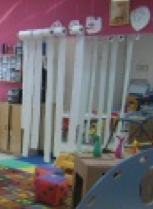
Figure 3. Toilet paper hanging from a curtain rod.
Create Immersion Experiences
We need to create immersion experiences for young children. This isn't about me teaching; this is about me creating opportunities to let the learning come and explode from within. I can personalize the immersion experiences in different ways, using:
- Ages & Stages - Babies and Toddlers: Each child goes through ages and stages in their own way. Each child is unique and will experience different learning pattern sequences and developmental moments.
- Multiple Intelligences
- Multi-Sensory: Children need to learn with hearts, minds, hands, and maybe a little bit of soul, too.
- Learning Styles and Individual Strengths: If you are not matching their individual strengths then you are robbing them of the deepest emotional power that they have to bring to their learning.
- Temperament Styles: Temperament styles will change every part of learning. It is who we are, whether we are one day old or whether we are a hundred years old. I laugh with our parents, how your child comes into their first class with me as a two-month-old, how they leave my class as a two-year-old, how they start kindergarten, how they go off to college and how they become parents is all part of that temperament style. We have to honor it and respect it.
Ages and Stages
Note: For this next section, please refer to your handout titled "We Create Magic: Infant/Toddler Ages and Stages."
As early childhood educators, we know the secrets of ages and stages in ways that many other people don't. Whether you learn it from courses and from graduate degrees, or whether you learn it from your own experience observing children, you gain a sense of what is right at each age and stage. Trust in that developmental process because development is power.
Everything about the zero to four-month range falls within the attachment bubble. At this stage, it's all about texture, massage, and loving touch. It is also important at this stage to give babies a sense of connection and safety, joy and love. I always do infant massage. I start every baby class with air massage. You give all of the adults a straw to use to blow on their baby from head to toe, but then you have to observe and pay attention. How does the baby tell you what they like? Where's their favorite place for the air: on their neck? their belly button? in the little crinkly spots? You can also use paint brushes, makeup brushes, feathers, wet or dry Q-Tips, and cotton balls. I even use sandpaper, albeit gently, to let them know that even those rough textures are part of a sensory experience. Use all of their senses (vision, smell, touch, sound and taste) to create magic for them.
One developmental awareness game we can play with babies is silly face and accurate face. We draw faces on two round white paper plates with Magic Markers, one with an accurate face and one with a silly face (where the eyes and nose are in the wrong spots, and the hair is every which way). I hold each of them over babies that are laying on their backs, and I watch to see which one they prefer, which one do they look at longer? I tell parents, the accurate face is the right answer, but my girls usually will choose crazy face because girls are out of the box thinkers. Maybe that's not quite research-based, but it's fun and it gives parents permission to have their children make any choice be right. How will their child tell me what they like? Will they stare? Will they reach for the plate? Will they blow bubbles? Will they smile? Knowing your babies is about knowing how they communicate.
Another game we can play is to show the baby a doll, and then turn it upside down. I ask the parents if they think their baby will track the doll's feet or the doll's face? Or, if they are under six months, they may just look away. I also like to use tongue play, where we stick out our tongues at the babies. Blowing bubbles is another fun activity. Whichever curriculum activity you use, watch and see how real children interact. There's never a wrong answer; it's always about what that child is telling us about themselves.
Between 4-8 months, babies love to feel textures. I work in a synagogue-based center, and we use matzah meal for the babies to play with (Figure 4). It is edible and a little bit rough. We observe how the babies move their fingers? Do they clench it between their fists? Do they touch it daintily with their fingertips? You can also use baby cereal. You can start with Cheerios -- anything that's edible goes on the floor tray. If a child chooses not to participate, that's okay too because sitting around a tray with other babies makes it social. That child may be a watchful learner that needs to sit for a time and observe his friends. At around six to eight months, babies are aware of other babies' emotions, and they may join in after a while when they realize that it's safe and fun.
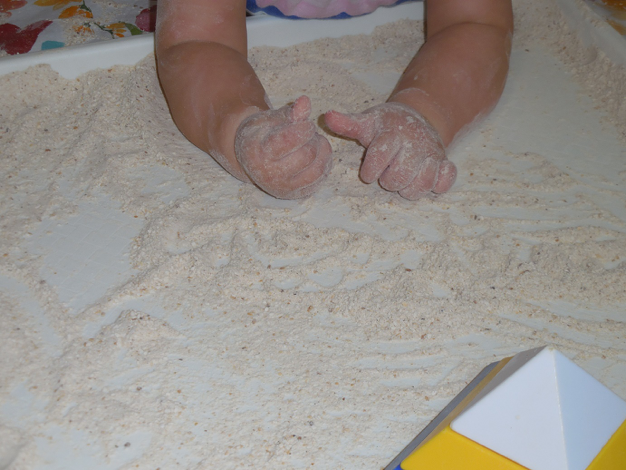
Figure 4. Baby playing with matzah meal.
Figure 5 shows ice balls that are formed by freezing water balloons. Make sure you take off the balloon because that's toxic and is a choking hazard. The babies will touch the ice; sometimes they rub it with both hands like a crystal ball. The baby in the picture has her feet on it. Some babies put their mouths on them because the balloon part resembles a nipple, which is humorous to witness.
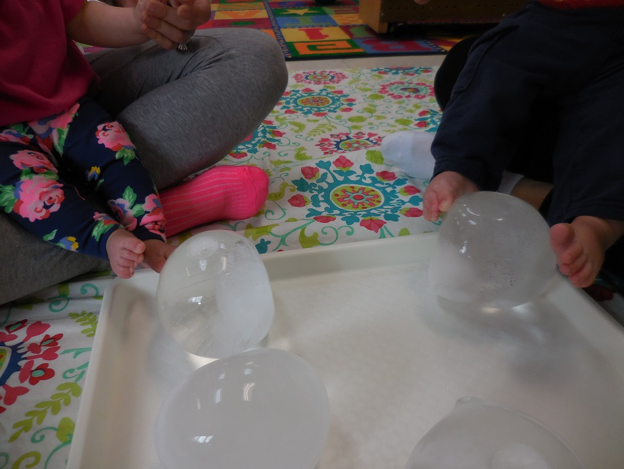
Figure 5. Ice balls made from water balloons.
Be sure to bring babies to other parts of the room so that they can explore other things that are happening. At around six to eight months, I am going to start letting them sit at the table. Personally, I do not believe in bucket chairs. I don't want babies to be confined. I don't want them to be coerced into having to be able to stay at those tables. I want them to have freedom and to have that sitting experience. I do have parents that can help provide their baby with a human seat belt using their hands. If you don't have parents to help with that, get yourself a low table that's four inches off the ground (similar in size to a mirror table or a light table). Then babies have a choice as to whether they will participate or not. As they become more mobile, I don't want you forcing them to sit at the table. I want you to entice them with curiosity and discovery.
Figure 6 shows a baby sitting at a table playing with pudding on top of bubble wrap. What happens if a baby doesn't want to touch it, and they start turning the other way? The parents often want to give up and say, "Well my child doesn't like texture." I like to pause and take a wait and see approach, to see what the child wants to do. I might let the child sit next to a space without any pudding on it so they can just get comfortable sitting on the chair. They may want to just feel the bubbles burst on the bubble wrap, or they can wait ten minutes until they can get their hands in there. I will give them spoons or brushes or something else to use instead of their fingers. What you want to do is create the enticement. When we had bubble wrap in the class last week, I had hammers on the table so I could use the hammers to pop the bubble wrap with a "bang." The auditory children are going to be way more excited to come for the banging. I like to use words during these activities like, "Bang bang, squish squish, pat pat." Some babies love getting messy, and some do not like it. The mess isn't necessarily enticing for all babies. Of course, I stay with the non-toxic edible foods up until 14 to 18 months, at which time it is appropriate to switch into edible non-toxic, which I'll tell you more about later.
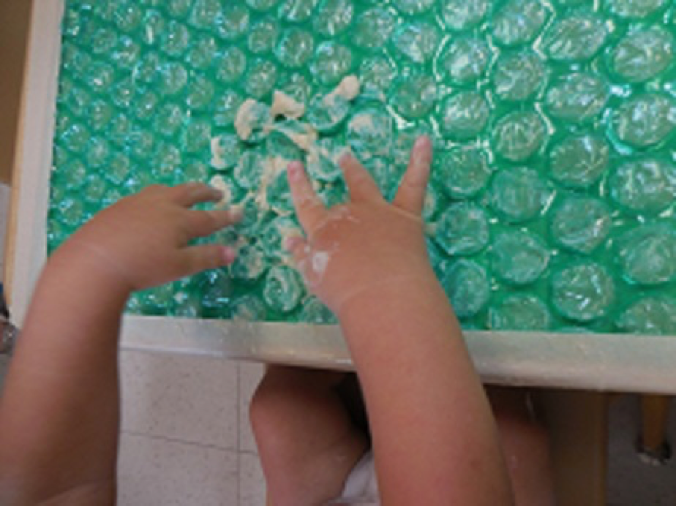
Figure 6. Baby at a table playing with pudding on bubble wrap.
In Figure 7, we can see babies being social with each other. You want a lot of opportunities for social interaction because babies are building their spatial awareness and their confidence. Being social allows them to work on problem-solving. Am I okay being nose to nose? Do I like this? Do I not like this? Am I okay with somebody leaning into me?

Figure 7. Babies being social.
Another thing I like to do in my classroom to define spaces in activity areas is to use grasscloth for babies to sit on (Figure 8). Some babies don't like it, as it's a little bit scratchy and uncomfortable. You can also use green felt, but you need different ways of enticing. I also use a lot of play bugs for my itsy-bitsy spiders, and I'll tell you more about this when we get to multiple intelligences. I do use large spiders. They're a little bit harder to find. A lot of the websites have the one-inch ones, but you need the bigger, three-inch ones. The tent is there; most children won't climb into that the first time that it's out. It's a little bit of a risk to go into a closed in space. Provocation and inspiration are key. I can't tell you that you want to do things the way I do things; it just works for me and if it comes from within me, then I have a lot of fun watching how they respond to it.
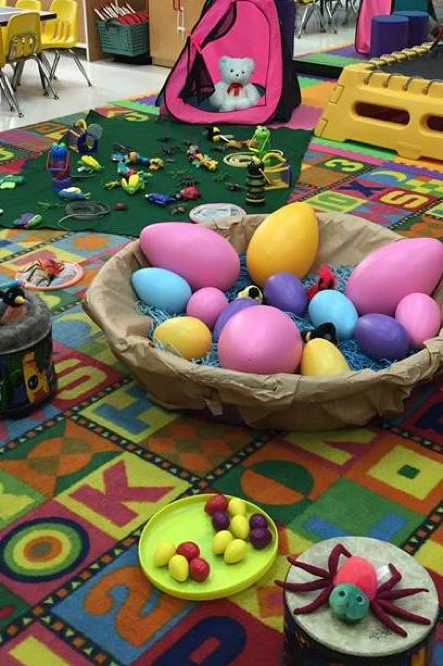
Figure 8. Classroom ideas.
For my 12- to 14-month-olds, we did a free association activity using a cone (Figure 9). You can buy one of these at Home Depot, or any home supply store. It has a hole in the top. Sometimes, we put clothespins in it, but here you can see this young man putting the cone on his head. Toddlers need activities where they can stand because that gives them a great sense of their power and a great sense of the control of their bodies. At this stage, we can move to materials that are non-edible non-toxic. After 14 months, if they go to put it in their mouth, you can redirect them. The National Association for the Education of Young Children states that after 14 months, it's okay to move to non-edible non-toxic, rather than stay only with that edible safe art.
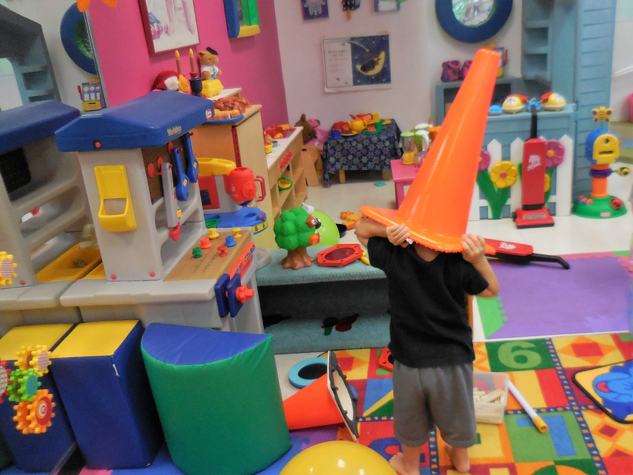
Figure 9. Free association activity using a construction cone.
Figure 10 shows children playing with shredded paper in my pool. The pool changes all of the time. This works the children's fine motor skills because some children are going to pick up the individual pieces of paper.
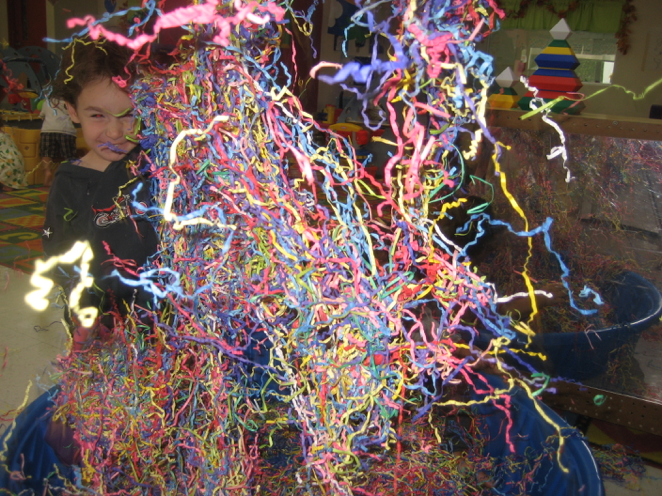
Figure 10. Shredded paper in the pool.
Another fine motor activity, as well as a standing activity, is to tape contact paper sticky side out onto a mirror. We can stick lots of things on there, such as tissue paper, pom poms, foam shapes (Figure 11), or feathers. There are so many items that each provide a different kind of fine motor experience.
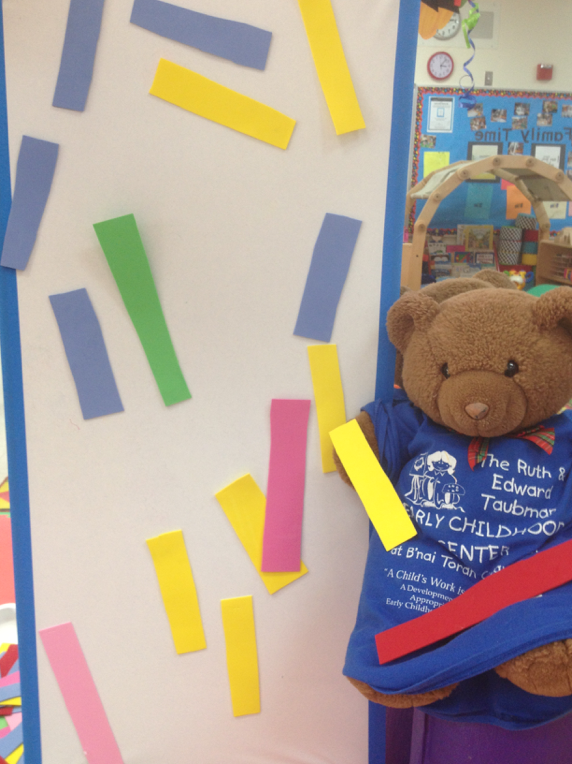
Figure 11. Contact paper sticky wall.
As an alternative to paint, we have filled pie tins with mud. If a child eats a little bit of dirt, it won't hurt them. I also do this as a floor activity where I've had children stand in the mud and have it go all the way up their legs.
Another great fine motor activity is to slice pool noodles with a knife and lace them right onto Lummi sticks (Figure 12). The older children will start to alternate patterns. Just getting them through the hole and making sure they don't fall off is a good problem-solving task.

Figure 12. Playing with sliced pool noodles.
Toddlers love to paint. The great thing is that you can paint anything: sneakers, t-shirts, hats. One thing that's so beautiful about that is it's intrapersonal. If I'm wearing something that I painted, it's me, it's where I come from, it's who I am. There are many activities that you can do to create texture and encourage imagination, as well as work a child's fine motor and large motor skills. Please refer to your handout for many more ideas.
Multiple Intelligences
By discovering your multiple intelligences, you can teach and communicate more effectively. By discovering children's multiple intelligences, you can optimize their learning and success. The nine multiple intelligences, as researched and identified by Dr. Howard Gardner (1983), include:
- Linguistic intelligence
- Logical-mathematical intelligence
- Spatial intelligence
- Bodily-kinesthetic intelligence
- Musical intelligence
- Interpersonal intelligence
- Intra-personal intelligence
- Natural intelligence
- Existential intelligence
Think about which multiple intelligences are your strengths. Personally, my multiple intelligences are that I am kinesthetic, verbal and intra-personal, but not visual, musical, or spatial. When you know your multiple intelligences, you will teach and communicate more effectively. If doesn't sound like fun for you, that's because it doesn't fit your multiple intelligence styles. If you have a child in your classroom who has a multiple intelligence styles that is different from yours or from the other children, you have to work a little bit harder to make sure that you are planning, creating and connecting with them. By knowing their multiple intelligences, that's how you can optimize their learning and their deepest discovery and potential.
Note: For this section, please refer to your handout titled, "100 Ideas for 9 Multiple Intelligences (Infant-Toddler): The 'What,' 'How' and 'Why' of Learning."
Linguistic. People with linguistic intelligence are the writers of the world and the attorneys of the world because they love to argue. They love language and they love language games.
Logical-mathematical. Logical-mathematical thinkers are the ones who sequence their toys and put them all in the same direction. They line up the cars, they line up the dinosaurs and everything goes in the same direction. They love patterns and peg boards. They are the first to go to the shape sorters, not for fill and spill and dump, but to figure out the mystery of that fit.
Spatial. Children with spatial intelligence are the artists, the engineers and the architects. They see patterns. They know space in their brains. These children need masking tape lines through your room. They need roads, they need pathways. They will love the blocks and the building.
Bodily-kinesthetic. The kinesthetic children are going to knock those buildings down after the spatial children make these beautiful designs and patterns with them. These are the children who think by moving, they are not not thinking. The only way they can think is by moving. For example, for me, if I'm writing a book, when I get stuck on an idea I go walk my dogs. As I'm walking, the ideas come pouring out. These are your athletes; they are also your surgeons. Don't let anyone dismiss these active, wall climbing, adventurous risk-taking children. They have a big contribution to make in this world.
Musical. These children think in music. These are babies that are comforted by their music versus comforted by the mobiles. The mobiles soothe the babies who are visual, logical, mathematical, and spatial. The musical children are drawn to sound. Musical children will identify the songs "Bingo" or "Old McDonald" in the first few seconds that you play it.
Interpersonal. These are the social children. These are the mayors of your classroom. From the first time you meet them, they walk in like, "Hi! Let me be your friend and let me help everyone else in this class to be your friend."
Intrapersonal. The intrapersonal children go deep within. These are the journalers of the world. These children are tuned in to emotions and are curious when you give them the emotion blocks. They might have a little bit of sensitivity.
Natural. These are children that innately connect to the natural world. Children who connect to the environment, to green and to living things, it's within them.
Existential. These are the little philosophers of the world. They are the deep thinkers. They ask "why" a lot.
Examples of Multiple Intelligences
Now we're going to go through some examples of activities for each of the multiple intelligences. I believe this is the cornerstone of all development. As early childhood educators, we need to honor who our children are and create the developmental scaffold to move each child through the stages of learning and problem-solving. Developmental play and developmental practice is always about helping children feel strong, safe, confident and masterful. We need to meet children exactly where they are and help them learn how to grow and make great choices. We are not meeting them where we think they should be or where we want them to be. That's why we're individualizing everything according to their multiple intelligences. As we go through these, it's important to remember that the best activities always fall into more than one category. Again, all of these activities are printed in the handout.
Linguistic. One of my favorite activities for linguistic intelligence is "Fast Words, Slow Words." Using a parachute, we shake the parachute to the song "10 Little Bubbles." First, we sing the lyrics really fast; then, we sing the next verse very slowly. I would say this activity is appropriate for toddlers who are around 20 months and up. I go around the circle, and they have to wait for their turn because I'm teaching delayed gratification as well as social-emotional skills. I ask each child if they want to me to shake it slow or fast. If they yell, "Fast, fast, fast!" then we shake it really fast. That one intrapersonal child will likely choose to shake it very slowly. This gives them the opportunity to use their vocabulary. Language-rich environments and developmentally appropriate early childhood settings involve me pausing for language, pausing for communication, watching and observing that response.
Another activity is "Ducks Say 'Moo'." You're seeing this linguistic intelligence with the babies when their mouth is moving as you're talking to them, as you're telling them a rhyme, as they're watching your mouth, as they are crawling and making sounds, babbling as they move forward. The language propels them from within to learn more, do more, understand more. Other ideas for linguistic incorporate megaphones, microphones, whisper tubes, telephones, imagination boxes. I think we're pretty good at linguistic.
Logical-mathematical. For logical-mathematical, I use a magic hat trick. I have a cowboy hat and I fill it with about 12-15 ping pong balls. I show the children that the balls are in the hat, and then I put it on my head and ask, "Where are the balls?" Older children with object permanence will know where things are when they disappear, and they will be able to tell me that the balls are in my hat. Then I say, "One, two, three," I lift my hat and out come out the balls flying through the air. Sometimes a child will cry because it startles them, but using anticipation and predictability is a social-emotional skill, too. You can count the balls when you pick them up.
Sequence play activities are great for logical-mathematical thinkers. Even something as simple as Grand Old Duke, or the lap song for babies ("go to the left, go to the right, flip them upside down") -- children begin to predict that sequence. All the best activities hit many different intelligences. Let me tell you about my Two Cup/Three Cup Shuffle. It's like Three Card Monte on the streets of New York. I get a set of nesting cups (starting with just two), and I put a little puppet inside and turn the cups upside down. Then I tell the child to watch the cup with the puppet. I move the cups all around, and they track it and they keep focused on it and they know where it is. Again, it's problem solving and sequence. Then, I won't say watch me; I might say "I'm putting it in the blue cup." Then, it becomes a language activity and they have to follow it. Then, I'll add a third cup to make it more complicated. I can start that activity from the time a child is sitting upright, and use it all the way up to two and a half-year-olds.
I also use the book "Freight Train" by Eric Carle. Parents are always shocked to know that the Freight Train is described by the National Association for the Education of Young Children as a math book. There is not one number in the whole book, but it's the sequence of cars. When you see that whole freight train lined up it's like a number line. In order to do algebra (a higher ordered math), children need to know that two is closer to three and farther away from eight, and they need to know how to jump along a number line. It's brilliant. That piece of information about number lines and board games comes out of Magic Trees of the Mind.
Spatial. Ideas for spatial intelligence activities include: pulling scarves through a laundry basket; sticky tape or contact paper crawl; toothbrush holders and Popsicle sticks. Easel painting. What I want you to do with the easel painting is cut out a circle in the middle of that big easel paper and observe which children paint or pattern around that hole. Who even notices the hole? Those are your spatial intelligence children.
Bodily kinesthetic. Examples of bodily kinesthetic intelligence activities include: playing with the toilet paper; the dinosaur swamp; elephant walking (big grocery store brown bags on feet). I hang a Wiffle ball from the ceiling using clear filament. Don't hang it at eye level because they're going to get black eyes; hang it above their heads and then give them fly swatters to swipe at it. Using the cone that you saw earlier, I put soft balls on there and give the children fly swatters to use as a bat to hit the ball off the cone.
Musical. Use the old Montessori practice: sing everything you do. If we sing directions, children hear them and process them better. Maria Montessori probably had a lot of musical intelligence. One activity you can implement to encourage musical intelligence is the "I Hear a Sound" tray. When we're sitting at our table for snack and stories, I will hide things under the table that make sounds. I show them what's on the tray, I put the tray down, and have them guess the sound. Use items that they are familiar with, like maracas and bells. I'm sure you can find four or five sounds that are very familiar that the children can say at 20 to 24 months. Another activity is Follow Me Around the Circle: I'll make a line and have them imitate what I'm doing. This involves following directions.
Interpersonal (Social). You can play Rock-a-Bye Baby and put the child on a blanket with two adults holding it. Anything you're doing in a group, anything you're doing with turn taking involves interpersonal intelligence. I have a soft, plush potato to use to play Hot Potato. We sit in a circle, and we say, "Cold, cold, cold, hot potato!" and you throw it to a friend. As they get older, you can even have them say which friend they are going to throw it to. This involves social-emotional intelligence because it incorporates executive function, self-management, and delayed gratification.
Intrapersonal (Self). Infant massage builds self-awareness of baby's body and emotions. Give toddlers non-toxic fabric to paint their own fabric shoes. Mirror play helps the child to recognize him/herself. Use the book The Easiest Feelings Book of All (adapted from Jean Feldman). It's a book with emoji faces that takes children through various emotions. The book How Does a Dinosaur Say Goodnight? is a good one too. Every time you validate a child's emotions, you are letting them know that who they are within is perfectly wonderful.
Natural. One time I had a class with two-and-a-half-year-old children. I brought in some big, slimy live snails that I found here in Florida. I had a little girl named Megan in the class who acted like a bull in a china shop. She did not behave like a stereotypical girl. She was not particularly friendly, she had no social intelligence, but not all of us are born with that and we loved her anyway. I gave every child a snail to hold. When I gave the snail to this girl, I admit that I assumed the worst (e.g., she's going to throw it across the room or she's going to squish it). Boy, was I wrong. She held it in her hand, lifted it up to her cheek and she let the antenna stroke at her cheek. That's natural intelligence.
Children with natural intelligence don't pull the flowers. These are the children who are in awe and wonder of nature. They love the bugs, the dirt, the plants, the scents, the night sky, etc. At my school, I started a pacifier tree for children who are about ready to give up their pacifiers, but they're not quite sure how to give them up. We hang them on a tree in our school and it's like a gift to the tree. They can visit them; they can wave to them when they're coming in and out of school. Nature is a powerful partner for you and your classrooms.
Existential (Spiritual). How is it possible that we have these little spiritual beings? They like to learn about magic, and the mysteries of the world, the night sky, the stars, the moon. Make black scratch pictures, using that dark black paper that you scratch with a stick to reveal colors underneath. Engage in flashlight play, use tea lights in boxes. There are many wonderful activities that help existential children connect and begin to understand themselves through the magic and mysteries of the world.
Temperament
When working with children, we need to learn each child's temperament. When children start school, when they're in my transition class and I'm preparing them for their first goodbyes for their parents, we get a glimpse of their temperaments. It's absolutely essential to understand a child's temperament when potty training. Every time there's change, every time they're going to be challenged, every time they're face-to-face with something that is creating any sort of emotional discord or tension, they're going to rely on their natural temperament to get through that situation.
Easy
First, we're going to start with the easy temperament children (Figure 13). However, we must remember that they're not all easy. Temperament is one of the most essential ways of meeting children exactly where they are.

Figure 13. Characteristics of an easy temperament.
Oh, how wonderful it would be if everyone had an easy temperament! If you could hand pick your own class, these would be the children you would likely choose. They are eager for new experiences. When you show them new things, they will reward you with smiles, hugs, attention and happy dancing. They are even in their emotional reactions, even when they are testing you. They might be a little bit more charming about it. Even when they are defiant, they are still more easy going about it, more resilient about it. They can sit for short lengths of time because they'll do what you ask them to do. An easy child knows how to play with the fuzz on their pants rather than pinch their neighbor. They can accept verbal support and encouragement. Sometimes, just a gentle reminder keeps them going forward. They are going to be good at adapting to new schedules. When you introduce change, these are the children that are going to go along with you. They're going to make you feel smart and prepared because they're rewarding everything you do with a positive reaction. They are flexible with inconsistency; they manage transitions easily and they are resilient from setbacks. Even when they struggle, they struggle more mildly.
Children with easy temperaments do have struggles, too. In the classroom, when you have a few children that are very demanding, having temper tantrums and crying, children with easy temperaments are easy to overlook, and we cannot do that. Make your plans and preparations knowing full well that you're not going to miss the easy children while you're handling the crying child, or holding a child back from hurting another child, or separating babies sitting on each other. You are still going to look and check in with eye contact with a smile for that easy child. They're not going to protest your inconsistencies, your unfairness or your shortcuts. They might let you get away with being a little bit lazy, but they deserve the same attention that you give all your other children. Be careful with that charm because although we love those charming children, we also want them to know that we have high expectations for them and that we will challenge them as much as we'll challenge other children. We might not challenge them to the fullest, because they're easy; you can just forget about them for a little bit. These are the children where it's easy to miss the fact that they are ill or injured, because they don't complain, and they have a higher pain tolerance.
Slow-to-Warm-Up
These are the children that I tend to want to protect and defend (Figure 14). Slow-to-warm-up children are the watchful learners. These are the children that like to stand back and take it all in.
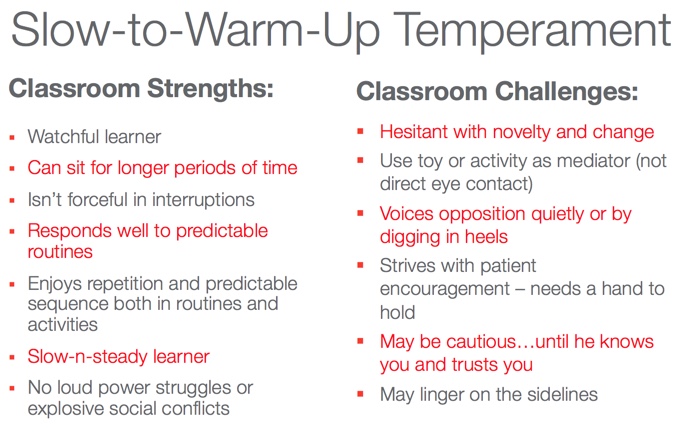
Figure 14. Characteristics of a slow-to-warm-up temperament.
A slow to warm up child is the one that potty trains in their head because they've been watching it, learning it. With any new task or complicated activity, they're going to observe, because they want to do it right before they actually implement it. They can sit for longer periods of time. Sometimes, you might have to take their hand, because they're happy to sit back and watch everyone in the room go through all the drama and the fun. When they need to interrupt you they're not going to be forceful. You have to watch their eyes. You have to know if they're trying to get your attention because they're not going to be very loud about it and they're not going to express their distress very loudly. For example, if someone is sitting on them, they might not advocate for themselves and just put up with it. You may have to intervene and give them help. They do respond well to predictable routines. They enjoy repetition and sequence because they know this is coming and this is coming and they're playing it out in their head. They are slow and steady. They might not be the first to get something, but they are internalizing it in deep and powerful ways. These children are your introverts. They will not have loud power struggles or explosive social conflicts, but that doesn't mean they don't feel those emotions as deeply.
One classroom challenge that slow-to-warm-up children have is they will be hesitant about novelty and change. They need time to adapt. It can be helpful to use a toy or an activity as a mediator, but don't make direct eye contact right away, as that makes them go back. If you push them, they will retreat. You need to come from their side. Give them a hand to hold, establish trust, let them come to you, meet them halfway, send out an olive branch, but don't force them. Force is the worst thing for them. They will voice opposition quietly or dig in their heels. They need patient encouragement. They will be cautious until they trust you. Look for ways to build trust. In your classroom planning, look for social-emotional signals and activities to build trust so that you are meeting those social-emotional needs, rather than just a curriculum agenda. And give them time on the sideline, but know how to engage them and bring them in when you need them.
Difficult
Finally, we have children who have difficult and intense temperaments (Figure 15). You might think of professions associated with difficult, intense temperaments such as CEOs, presidents, or artists. These children have just as much right to be in your classrooms and in this world, but we have to understand them and adapt.
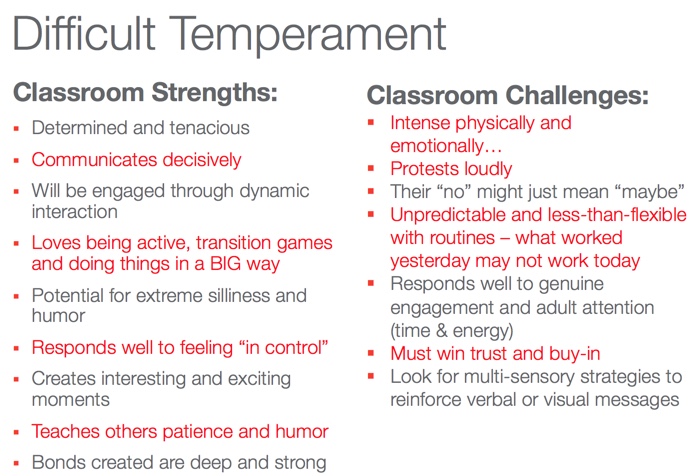
Figure 15. Characteristics of a difficult temperament.
In the classroom, these children are determined and tenacious. They want things their way, they communicate decisively. They go from zero to 60 in a heartbeat. They interact with dynamic interaction. They like active, transition games. If you're going to move them forward, move them forward with a big sweep. You can engage them with silliness and humor, but they want to feel in control. If you come in with too much of your control, you have a power struggle. You have to come with the invisible hand that makes them feel like it was their choice. They're going to teach us patience and humor. We don't always want to learn patience and humor, but the bonds that are created with these children make us so proud and they are the deepest part of our relationships because you had to work hard for these relationships.
These children are very intense, and they will protest loudly. Make sure you are taking care of yourself because you need stamina. Don't assume that their "no" means "no." Sometimes, they just have to be strong and powerful and oppositional, and they might mean "maybe". They are unpredictable and less-than-flexible. That was true when they were babies, it's true when they are two. Sadly, it also means that what worked yesterday might not work tomorrow. They are going to keep you on your toes. They are going to make you the best teachers possible. You have to win trust and buy-in. If you engage them oppositionally or with a power struggle, you're going to lose because they can stand off forever. Look for multi-sensory ways to reinforce verbal or visual messages. If you just try to talk at them or if you give them the eye, it's not going to be enough. You have to come and say, "I'll help you with your shoes" and use some physical presence to help move them forward.
Relationships First!
What do we know from all of this? It's not about curriculum, it's not about learning outcomes, it's about our relationships and the emotional connection with these children. When we engage their pre-frontal cortex, when children feel safe, when they feel loved, when they have a relationship with a caring, wonderful adult who believes in them, they will believe that anything is possible. You are not getting executive function or delayed gratification or problem solving or thinking skills without a heart. Heart, hands and head. The relationship between you and that child is the most important thing. However, teachers don't always understand that because the hard part is we want to be everything. We want to be so wonderful and so perfect. We want to be exactly as good as every other teacher. So, if that teacher has a great bulletin board, we want a great bulletin board, too. But, it is important to let go of some things.
When planning your curriculum, there are some things that you should choose NOT to include:
- Don't try to teach every concept. Teach what matters to you.
- Don't rush learning. There's no hurry. They will get it eventually. Just keep creating opportunities and with your developmental knowledge, keep moving everyone ahead. Keep immersing them all in this big beautiful world of all knowledge, all concepts, and all multiple intelligences and they will learn from each other as well as from you.
- It's all about the collaboration. It's you and me, it's me and each individual child. One plus one equals three. In other words, what the child brings and what I bring are less than what we make together. Not all children are doing the same thing at the end of the school year. But if you can convince parents that it's a collaboration that says, "I know exactly where your child's fullest potential is and I've got it. I've got you." They'll believe in you, too.
- Let go of the "supposed tos" because there's a lot of supposed tos out there. I know the pressure you're under. I know the demands, I know the expectations and parents and children are under those same stresses and demands, so show them how to let go by being that perfect role model of letting go of some of those supposed tos.
Summary
I want to end with a magic promise:
I think you believe in the magic. I think you feel the magic. I know you started in early childhood education because of that magic. I want you to think about what you believe in based on what you've just experienced here with me today, because we have a little relationship, too. If you believe in yourself, the reasons why you're a teacher, and your vision and your goals for being a teacher and if you believe in the children, if you believe that you work with babies and toddlers for a very specific reason in your heart and in your thinking and in your worldview and what you believe about childhood and babyhood, then I need you to make a promise to yourself based on something you've learned here today. Make that promise because that's what will keep you going. It's a joyful profession and you are doing amazing work.
Citation
Deerwester, K. (2018). We create magic: experiences and environment for infant/toddler classrooms. continued.com - Early Childhood Education, Article 22826. Retrieved from www.continued.com/early-childhood-education
